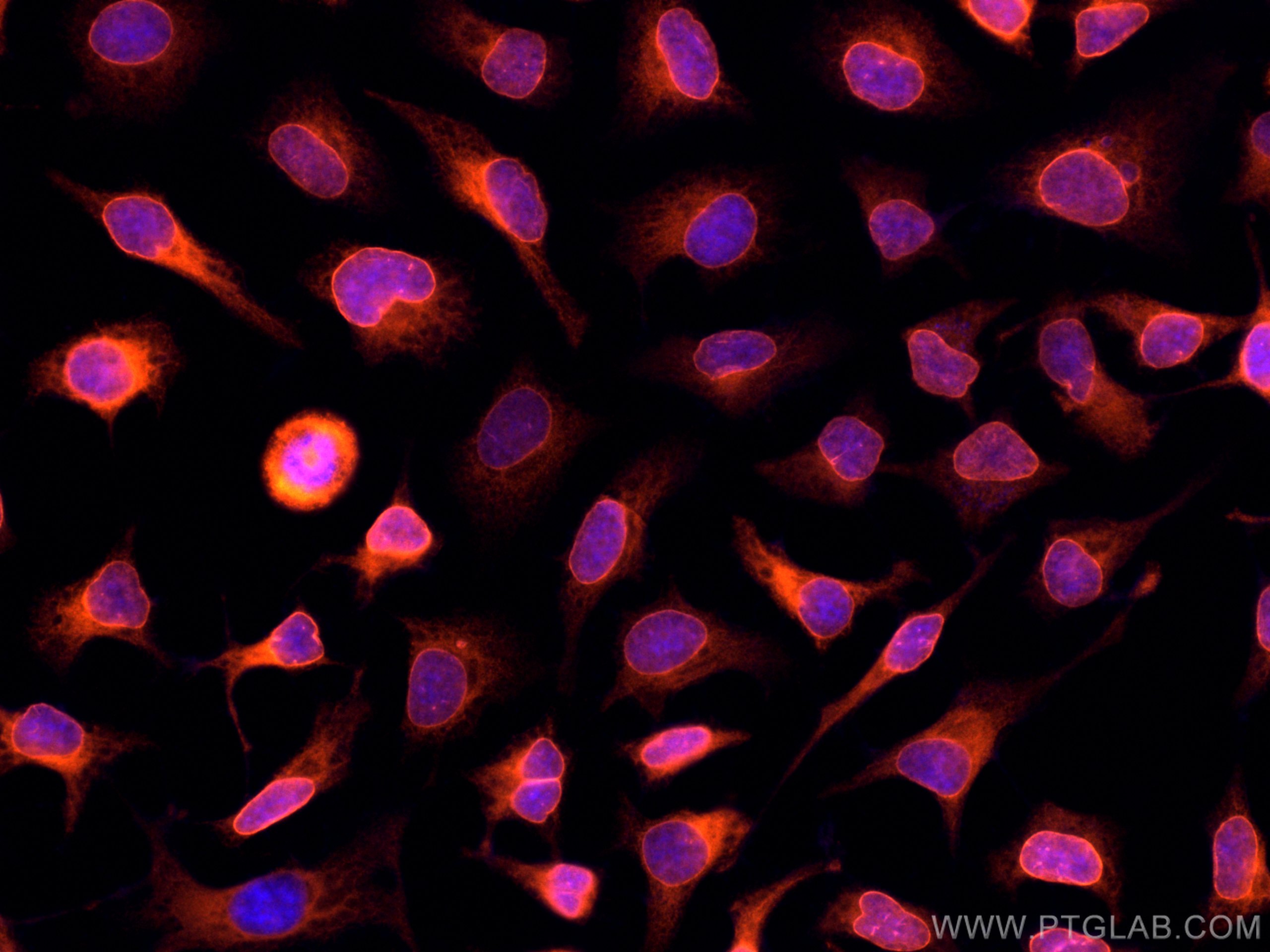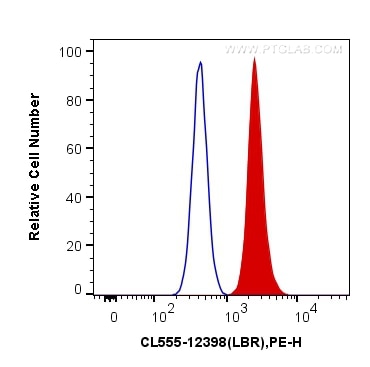Tested Applications
| Positive IF/ICC detected in | HeLa cells |
| Positive FC (Intra) detected in | HeLa cells |
| Positive FC detected in | HeLa cells |
Recommended dilution
| Application | Dilution |
|---|---|
| Immunofluorescence (IF)/ICC | IF/ICC : 1:200-1:800 |
| Flow Cytometry (FC) (INTRA) | FC (INTRA) : 0.40 ug per 10^6 cells in a 100 µl suspension |
| Flow Cytometry (FC) | FC : 0.40 ug per 10^6 cells in a 100 µl suspension |
| It is recommended that this reagent should be titrated in each testing system to obtain optimal results. | |
| Sample-dependent, Check data in validation data gallery. | |
Product Information
CL555-12398 targets LBR in IF/ICC, FC (Intra) applications and shows reactivity with human, mouse, rat samples.
| Tested Reactivity | human, mouse, rat |
| Host / Isotype | Rabbit / IgG |
| Class | Polyclonal |
| Type | Antibody |
| Immunogen |
CatNo: Ag3088 Product name: Recombinant human LBR protein Source: e coli.-derived, PGEX-4T Tag: GST Domain: 1-210 aa of BC020079 Sequence: MPSRKFADGEVVRGRWPGSSLYYEVEILSHDSTSQLYTVKYKDGTELELKENDIKPLTSFRQRKGGSTSSSPSRRRGSRSRSRSRSPGRPPKSARRSASASHQADIKEARREVEVKLTPLILKPFGNSISRYNGEPEHIERNDAPHKNTQEKFSLSQESSYIATQYSLRPRREEVKLKEIDSKEEKYVAKELAVRTFEVTPIRAKDLEFG Predict reactive species |
| Full Name | lamin B receptor |
| Calculated Molecular Weight | 615 aa, 71 kDa |
| Observed Molecular Weight | 58 kDa |
| GenBank Accession Number | BC020079 |
| Gene Symbol | LBR |
| Gene ID (NCBI) | 3930 |
| RRID | AB_2919610 |
| Conjugate | CoraLite®555 Fluorescent Dye |
| Excitation/Emission Maxima Wavelengths | 557 nm / 570 nm |
| Form | Liquid |
| Purification Method | Antigen affinity purification |
| UNIPROT ID | Q14739 |
| Storage Buffer | PBS with 50% glycerol, 0.05% Proclin300, 0.5% BSA, pH 7.3. |
| Storage Conditions | Store at -20°C. Avoid exposure to light. Stable for one year after shipment. Aliquoting is unnecessary for -20oC storage. |
Background Information
Lamin-B receptor (LBR) is an integral membrane protein of the inner nuclear membrane that contains a hydrophilic N-terminal end protruding into the nucleoplasm, eight hydrophobic segments that span the membrane and a short, nucleoplasmic C-terminal tail (PMID: 28858257). LBR anchors the lamina and the heterochromatin to the inner nuclear membrane (PMID: 10828963; 28858257). It is also essential for cholesterol synthesis (PMID: 27336722). Mutations of the LBR gene have been associated with autosomal recessive HEM/Greenberg skeletal dysplasia and Pelger-Huët anomaly and Greenberg skeletal dysplasia (PMID: 12618959; 12490533). The calculated molecular mass of LBR is 71 kDa, which is larger than the apparent molecular mass of 58 kDa, probably due to the aberrant migration of membrane proteins subjected to SDS-PAGE (PMID: 2847165; 2170422).
Protocols
| Product Specific Protocols | |
|---|---|
| FC protocol for CL555 LBR antibody CL555-12398 | Download protocol |
| IF protocol for CL555 LBR antibody CL555-12398 | Download protocol |
| Standard Protocols | |
|---|---|
| Click here to view our Standard Protocols |






